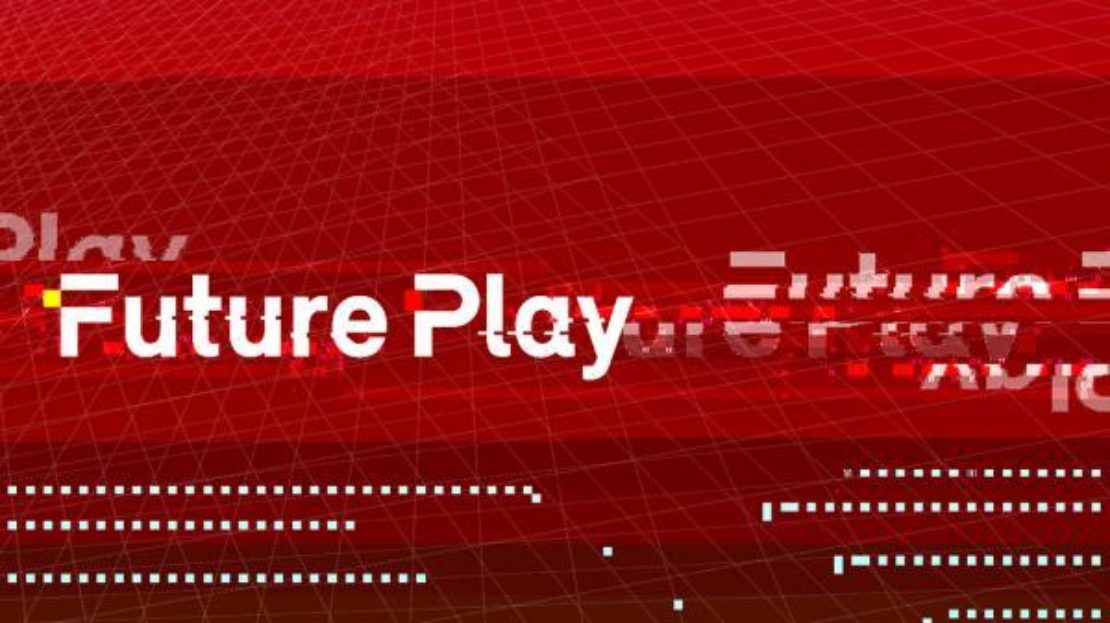The future's in play

Play, as any fool knows, is fun. Now neurology's study of fun and play in mammals (including us) looks like it could deliver a breakthrough in mental health.
We are about to see the first effective treatment of a human psychiatric disorder – depression – that has come from precise and targeted neuroscientific research into the emotional processes of the brain.
The antidepressant molecule discovered is called GLYX-13 – or as its current, Dublin-based developer Allergan calls it, Rapastinel. (The product is at an advanced stage of approval with the Federal Drugs Agency (FDA) in the US).
As the animals play (and are played with), they become eager to learn
GLYX-13 was identified by Jaak Panksepp at Washington State University and fellow researchers through an activity for which the professor has become notorious. They tickle rats – and then identify, through ultrasonics, what is regarded to be a form of laughter.
This rat laughter generates measurable neurophysiological processes. Put simply: as their experience of what Panksepp calls 'social joy' is intensified, the rats' neurons become flexible, dynamic and willing to respond to new experiences. As the animals play (and are played with), they become eager to learn.
As a molecule, GLYX-13 stimulates in rat neuronal structures this appetite for playful learning (or "long-term neuronal potentiation", in the jargon). And as most scientists accept that rat brains share the same deep structures as human brains, Panksepp proposes that it will work for us too.
Play is central to the continued psychological and social development of adults
Initial results are evidently impressing the FDA. Rapastinel has the promise of making humans with depression far more receptive to psychotherapeutic approaches. By neurochemically enhancing in patients our readiness for play, debilitating traumas may be more effectively treated in the consulting room.
That's not a bad outcome from tickling rats till they laugh. But then, there are many powerful outcomes to be had from the serious and multi-disciplinary study of play.
As the Panksepp discovery indicates, play has become fertile ground for enquiries at the meeting of nature and culture. It's driven on the former side by the march of evolutionary accounts of human minds and bodies – and on the latter side by ongoing transformations in the ways we work, care, educate, and create.
If children don't develop the 'play habit' during their early years, their health is compromised
Crucially, the lens of play focuses our attention away from the popular discourse of cognitive biases and limits, the 'nudge' school of thinking. Such thinking claims that that our evolved natures subvert, to some extent, our capability to consciously navigate our modern lives.
Thinking about play points us instead towards our inner resources that are equally as important – those exhibiting cognitive flexibility and surplus, rather than limits. Play is the source of that "influx of mind into matter" (as Johan Huizinga put it in Homo Ludens), creating a world we should expect to be able to engage with, rather than simply be bamboozled by.
Perhaps The Simpsons will make this point clearer. The favourite icon of the Nudge school is Homer Simpson – perpetually upended by his own savannah-era appetites and weaknesses. Instead, from a play perspective, think of Lisa Simpson: aspirational, curious, ethical and expressive, seeking an outlet for her yearnings through her saxophone, her reading, her various causes.
Play will be to the 21st century what work was to the industrial era
A full evolutionary account of ourselves should take play, imagination and purposeful creativity as seriously as our behavioural limits. To adapt Dan Ariely's words, we should value and explore our unpredictable rationality (Lisa), as much as our 'predictable irrationality' (Homer).
And if contemporary biology and neuroscience is giving us a foundation for the power and potential of play, then it's no surprise that artists, radicals and visionaries in all fields are invoking the term.
We live in an era where explanations about human nature framed in terms of evolution has often encouraged a downbeat, self-doubting sense of agency. Play science restores to us a basic confidence that we can pursue and excel at the arts of living, in a complex world.
My curation of the Play theme in this year's FutureFest event, in the shape of speakers and commissions, could only touch on a few of the leading research fronts. Many of those speaking and performing at the event this year are informed and inspired by play-oriented accounts of human nature. Legendary musician and artist Brian Eno will be presenting a talk titled Remaining in Play. In Eno's words:
It is widely acknowledged that play is central to the physical and mental development of children. I will argue that it is equally central to the continued psychological and social development of adults – and that, through art and culture, we should continue playing throughout the whole of our lives. I will explore the socio-political implications for society of 'remaining in play'.
Other speakers in the event will deepen Eno's points. Sue Palmer, one of the world's leading experts in child development and learning, will make the case for the UK to introduce more play-based preschools for 3-7 year-olds. Kids don't play outside any more, says Palmer, and children's play is increasingly indoor and sedentary:
Yet neuroscience shows that active, social, self-directed play – preferably outdoors, in natural surroundings – is a biological necessity. If children don't develop the 'play habit' during their early years, their long-term physical and mental health is seriously compromised.
The play of children is usually defined by playworkers as "freely chosen, personally directed, intrinsically motivated behaviour that actively engages the child". And what all this running, fiddling, mimicking, chasing and imagining does is to develop, at a crucial stage, a child's capacity to "self-regulate".
Play experiences help us forge the essential strengths and skills we need to be a social animal
Self-regulation enables us, as Palmer writes in her forthcoming book Upstart, "to identify feelings and manage emotions; control the focus of attention and persevere with chosen tasks; empathise with others and adapt behaviour appropriately; monitor and reflect on one's own actions; identify and use successful strategies; plan ahead for increasingly complex sequences of behaviour." It is the very foundation of becoming a life-long learner.
One could waspishly suggest that self-regulation looks like a pretty high bar even for a full-grown adult. This is Palmer, Eno and Panksepp's larger and more political point. Play experiences help us forge the essential strengths and skills we need to be a social animal – managing ourselves in order to live with others.
What happens when we don't attend to play in those crucial developmental period years? It's at least arguable – and Palmer argues strongly – that we contribute to rising indicators of mental health distress (and, heartbreakingly, particularly in young people), through our poor understanding of, and support for, a rich culture of play in the first seven years of life.
Watching bonobos play, you see the evolutionary roots of human laughter, dance and ritual
We could be hard-nosed and utilitarian about this. The top three performing nations in the OECD's Pisa ranking for public education standards – Finland, Switzerland and Estonia – all have play-based preschool systems from ages 3 to 7.
In the broad light of play science, we should seriously ask ourselves whether the UK's school-starts-at-five policies, and its creeping regime of early testing, is unintentionally – but mistakenly – cramping the potential and flourishing of generation after generation.
Jaak Panksepp is also a powerful advocate – from his own cross-mammalian studies – of the developmental benefits of rough-and-tumble play, in the early years of childhood. Panksepp regards the ADHD 'epidemic' in US schools as a crisis of 'self-regulation' – which is itself an entirely predictable outcome of reducing recess time in curricula; constraining energetic free play in favour of formalised lessons and tests.
Primatologist Isabel Behncke Izquierdo, another FutureFest speaker, makes a powerful case that the evolutionary drive of play must be answered by our institutions, organisations and everyday systems. Isabel's ethological work in the Congo is with bonobo monkeys – who, along with chimpanzees, are our nearest cousins. But bonobos are known as the "make love, not war" apes, playful to a fault (including a wild erotic life).
As Isobel puts it, "For us and them, play is foundational for bonding relationships and fostering tolerance. It's where we learn to trust and where we learn about the rules of the game. Play increases creativity and resilience, and it's all about the generation of diversity – diversity of interactions, diversity of behaviours, diversity of connections. And when you watch bonobos play, you're seeing the very evolutionary roots of human laughter, dance and ritual."
Play is not frivolous. Play's essential
In her 2011 TED talk, Behncke also suggests that understanding bonobos holds a key to a future in which we need greater creativity and cooperation. "Play is our adaptive wildcard. In order to adapt successfully to a changing world, we need to play," she says – for bonobos and humans alike. "Play is not frivolous. Play's essential."
The great theorist of play Brian Sutton-Smith would approve of Behncke's account from the jungle. In his own core definition of play, he calls this "adaptive potentiation". But Sutton-Smith is also at pains, in his book The Ambiguity of Play, to stress precisely that the 'wild card' of play is often ambiguous – at times, play feels transgressive and disruptive; but we can also recognise it as developmental and strengthening.
As adults, we can choose to articulate playfulness in ever more subtle and elaborate ways
As Eno suggested, in order to continue the play process that has forged us as children and adolescents in our adulthood, we use art and culture. Yet, as adults, we can choose to articulate this playfulness in ever-more subtle and elaborate ways, becoming consciously radical and challenging.
This weekend, the novelist and critic Will Self will pose a conundrum to all adults: we habitually regard play as the opposite of work – triviality to its seriousness – but as work becomes less central under automation, then play takes on a workmanlike aspect in our lives. This is a real problem: isn't play supposed to be about how we freely come upon surprise, wonder and subversion? How much 'play' of this kind is left in our hyperconnected, monitored and commodified lives?
Are we replacing labour with 'playbour'?
Self still believes in the individual's playful ability to be 'radically subjective', to "drift across the city without programme or destination," he says. But there's something worrying him about how our wired world can so easily put our play to work, in systems that endlessly entice our participation and engagement. "We will have to seek our fun in the woods between these worlds," says Self.
In my contribution to the New York Museum of Modern Art's 2012 exhibition Century of the Child, I wrote that "play will be to the 21st century was work was to the industrial era – our dominant way of knowing, doing and creating value". Self challenges us to dig deep into the unruly roots of human play – in order that it doesn't become the lubricant to a social order that's even more subtly controlling than the industrial era. Are we replacing labour with what gaming theorists call 'playbour'?
As that ludic master John Cage once said: "These are such good questions, perhaps we shouldn't spoil them with answers."
We humans are players.
